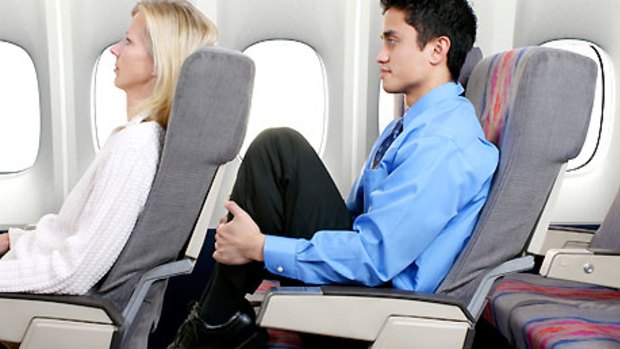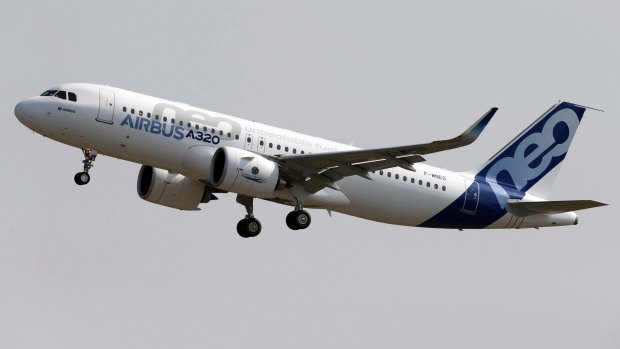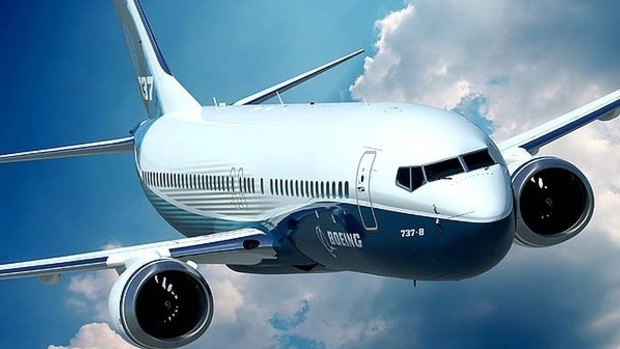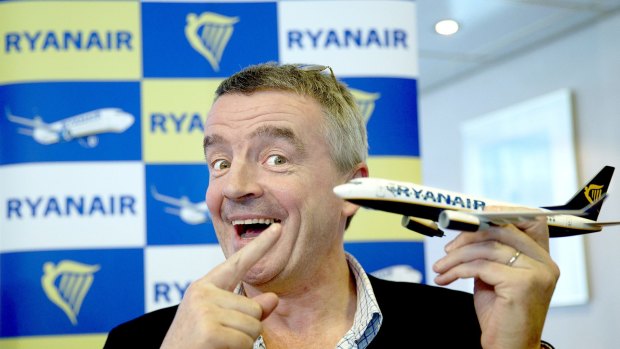This was published 9 years ago
Plane cabins on Boeing 737 MAX and Airbus A320neo to squeeze in more seats
By Chris Leadbeater

Air passengers in the 21st century may have to accept that flying will come with a lot less leg space.Credit: iStock
Air passengers in the 21st century are accustomed to a relative lack of space - especially if, like most, they are travelling in economy class. However, with the aviation industry poised to deliver updated aircraft in the next two years and carriers keen to fit in even more paying customers, we may soon find that room to manoeuvre at 36,000ft (11km) is an increasingly outmoded concept.
The two main aircraft manufacturers, Boeing and Airbus, are working on new models that will reconfigure the traditional cabin, mainly by offering more seats. Both the Boeing 737 MAX (due to enter service in 2017) and the Airbus A320neo (making its debut in late 2016) will squeeze as many passengers as possible into the available space, putting added pressure on short-haul travellers, in particular.
Last month, Airbus received permission from the European Aviation Safety Agency to place an extra 15 seats in the A320neo, raising its capacity from 180 seats to 195.
More intimate still will be the Boeing 737 MAX 200 - the catalyst for which has been Europe's biggest low-cost airline. Ryanair placed a £7.5 billion order for 100 of the aircraft last year, with an option for another 100 at a future date. But the Irish carrier wanted the 189 seats on the blueprint for the 737 MAX to be increased to 200. Boeing responded by custom-creating a special model, the 737 MAX 200 (the "200" being a reference to the boosted number of seats), with initial delivery pencilled in for 2019.
Ryanair chief executive Michael O'Leary was on typically forthright form when he announced the order last September, describing 200 seats as "the sweet spot" for budget airlines. "It means that we are going to expand and grow very strongly in Europe, both in new markets and in going in and taking traffic away from incumbent carriers," he said. "I hope it will hasten an era of a new price war in Europe over the next 10 years."
O'Leary also revealed that the extra capacity on the Boeing 737 MAX 200 would generate an extra €1 million ($A1.4 million) in revenue per aircraft per year.

The A320neo will feature five fewer seats than the Boeing 737 MAX 200.Credit: Reuters
While the precise layouts for the aircraft are still under wraps, the extra capacity on both the Boeing 737 MAX 200 and the Airbus A320neo will come from maximising cabin space. The new Ryanair Boeing 737 will feature smaller lavatories, with one wall of the cubicle deliberately curved to accommodate the backs of the seats on one side; the size of the kitchen galley will also be reduced (less of a concern on "budget" European flights where the meal service tends to be sandwiches and cold snacks ordered from a small menu at extra cost).
"Seat pitch" - the space between your seat and the same point on the chair in front - may well also be affected. On Ryanair aircraft now in operation - the carrier's 300-strong fleet largely comprises the 189-seat Boeing 737-800 aircraft - this is 30in (76.2cm). The airline has said it does not want to drop below this, but the Boeing 737 MAX 200 may cut the gap to 29in (73.6cm). The A320neo could go as low as 27in (68.6cm). This latter statistic will help Airbus overcome the fact that while the A320neo will feature five fewer seats than the Boeing 737 MAX 200, it is a marginally shorter aircraft. The expanded capacity on the standard Boeing 737 MAX means that the design includes an extra exit door to assist passenger movement - and an extra two on the Ryanair model.
Although this "pack-them-in" strategy will result in more attractive balance sheets for airlines, the profits will come at the expense of economy-class passengers. Michael O'Leary has also revealed that the Ryanair incarnation of the Boeing 737 MAX will use "slim" seating, although frequent customers of the airline may suggest that the carrier's facilities already qualify for this flattering description.

The Boeing 737 MAX can fit in enough seats to hit Ryanair's 'sweet spot' according to boss Michael O'Leary.
A survey by Business Traveller in 2012 listed Ryanair's seats as the tightest offered by 32 major airlines - at 16in (40.6cm). The same figures showed that British Airways economy seats could be as wide as 18in (45.7cm), with those on Virgin Atlantic stretching to 19in (48.3). Seat width on Ryanair's key low-cost rival easyJet was listed at 171/2in (44.5cm).
Of course, airlines could argue that cramped seating conditions are not entirely their fault - and that passengers are as much to blame. A 2012 report by CNN revealed that while the average width of the American posterior in the sixties was 14in (35.6cm), in the second decade of the 21st century it has crept up to a more generous 15in (38.1cm).
The Boeing 737 MAX 200 is, however, unlikely to play host to an unusual item that is floating around drawing boards at Boeing's headquarters. The firm has filed a patent for what is described as a "Transport Vehicle Upright Sleep Support System" - a device to help economy-class passengers doze off while seated. Effectively a pillow with a hole for breathing, it can be strapped to the headrest of your chair, cradling your face and chest as you lean forward in a bid to enjoy some rest. It will be no match for the flat beds that give first and business-class passengers a full night's slumber, but it may be an answer to the issue of sleeplessness in less luxurious parts of the aircraft.

Ryanair CEO Michael O'Leary.Credit: Reuters
However, the device would be most useful on long-haul flights. While Ryanair says it will begin services from Europe to the United States in the next decade, the Boeing 737 MAX 200 will not have the range to cross the Atlantic.
There is more to the respective developments of the A320neo and the Boeing 737 MAX 200 than a simple attempt to create modern aircraft in a competitive market. The race is part of the wider - and frequently bitter - rivalry between Seattle-based Boeing and Toulouse-based Airbus.
Airbus has been vocal about its opposite number's work, saying that the two extra doors on the Boeing 737 MAX 200 will increase the weight of the aircraft and, therefore, reduce its fuel efficiency, while also suggesting that the rush to squeeze in more passengers will mean a noticeable reduction in the quality of in-flight service, with three of the standard eight galley trolleys used to offer food, drink and duty-free sales needing to be removed from the aircraft to accommodate the added seating.
"Even low-cost carriers need more [trolleys] than that if they are serious about on-board sales and ancillary revenues," Airbus spokesman Mary Anne Greczyn said.
Boeing has contented itself with defending its product.
"The 737 MAX 200 is the perfect fit for Ryanair," said Ray Conner, chief executive of Boeing Commercial Airplanes, at September's launch. "It will provide improved efficiencies, 20 per cent lower emissions, increased revenues and a high level of passenger comfort."
Whatever the ramifications for the paying clientele in the average economy-class cabin, passengers are unlikely to be able to avoid this new generation of aircraft.
Airbus received more than 2000 orders for the A320neo in the two years following its launch in December 2010, with Qatar Airways putting in a request for 50 of the aircraft in November 2011. Boeing had more than 2500 orders for the 737 MAX by the end of 2014.
The Telegraph, London
Sign up for the Traveller newsletter
The latest travel news, tips and inspiration delivered to your inbox. Sign up now.